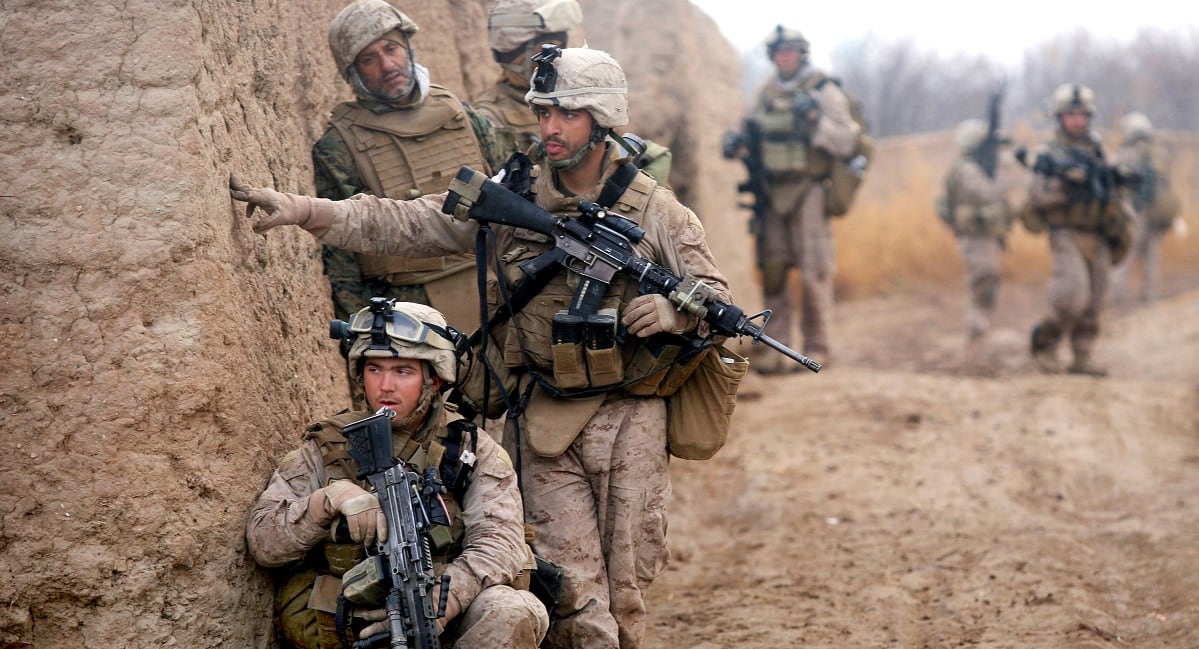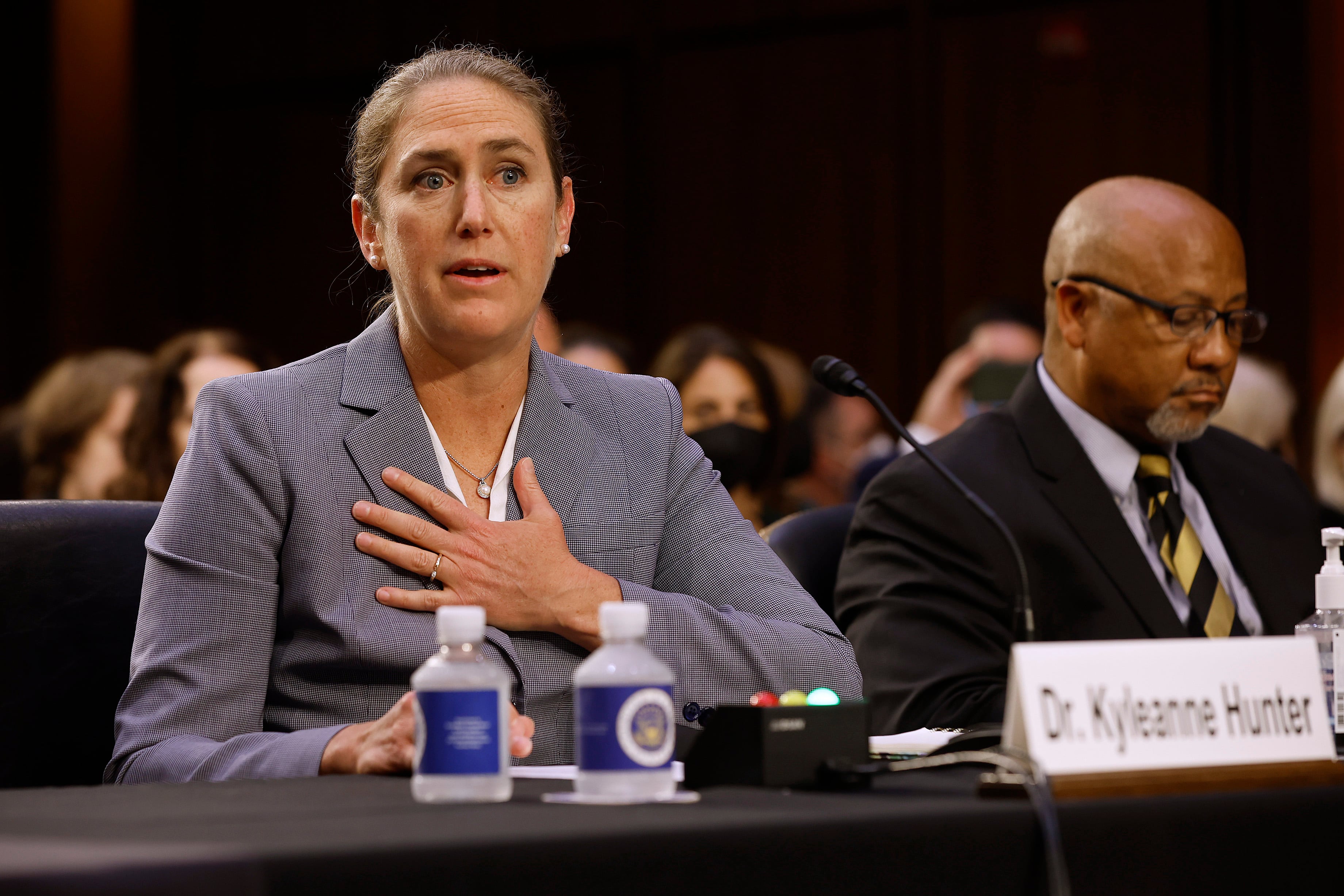First to fight long has been both a recruiting slogan and an enduring Marine mantra. Marines take pride in the Corps’ history of showing up first, as America’s 911 force.
The Marine Corps originally deployed on naval vessels. In the wake of the Vietnam War the self-contained combined arms force known as the Marine Corps Air-Ground Task force developed, ready to deploy anywhere on a moment’s notice. The United States has relied on the consistently deployable and tenacious Marine Corps to fight her battles at the tip of the spear, especially for the past 20 years of land wars in the Middle East.
But those wars have ended, and a new war is on the horizon: China. It’s the biggest threat the commandant has his eyes on. And it’s the proclaimed reason he quickly and drastically has been working to change the Marine Corps.
Some call him a visionary. Some say he is destroying the Corps from within.
Its evolution toward a smaller, dispersed, missile heavy, naval fighting force has caused a number of respected retired Marine generals to strongly condemn Berger and where the Corps is going. They say it’s a step in the wrong direction, putting national security at risk and relegating the Corps to an irrelevant support for the Navy.
“We are not a bunch of old guys who simply want to keep around the Corps we served in,” retired Marine Lt. Gen. Paul Van Riper told Marine Corps Times in a March phone interview. “We know it must change to remain relevant.”
These former Marine leaders insist that ongoing structure changes “will not be able to meet the needs of the combatant commanders,” said Van Riper, who ended his career in 1997 heading Marine Corps Combat Development Command. (Read his op-ed, “Jeopardizing National Security: What is happening to our Corps?”)
A group of more than two dozen retired Marines, with a combined 152 years of active duty Marine service, fear completely ditching tanks, and cutting artillery, air components and law enforcement battalions might soon spell the end of the Corps as America’s 911 force. And even the end of the Corps itself.
They say they have been petitioning Marine leadership, to no avail. And now they are speaking out publicly, trying to put a halt on a two-year plan that already has been blessed and has begun.
Group members include Former Secretary of Defense and retired Marine Gen. James Mattis. Former Secretary of the Navy and Marine veteran Jim Webb. Former Chairman of the Joint Chiefs of Staff retired Gen. Joe Dunford.
“I know of no retired four star who supports the commandant,” Van Riper said.
They, like retired Gen. Anthony Zinni, who retired in 2002 as commander of U.S. Central Command, see the Corps as stripping away its ability to fight a combined arms battle.
RELATED
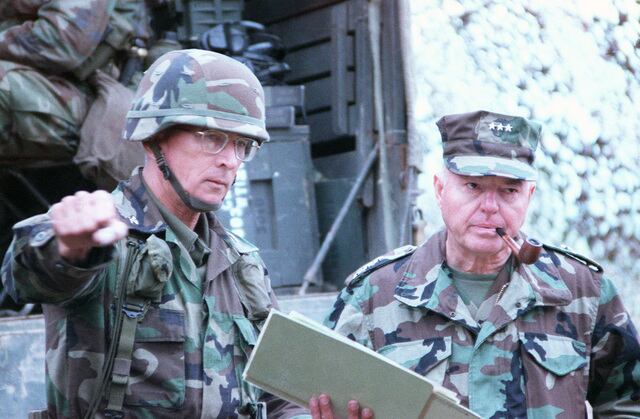
But with a possible war with China looming, others say Berger has been the right leader at the right time.
“We have a commandant who is a visionary,” Col. Jonathan Dunne, the chief of staff for Marine Corps Combat Development Command, told Marine Corps Times at an exclusive Pentagon briefing.
The design
Under Berger’s vision the Corps will be smaller, lighter and more mobile, armed with equipment to allow Marines to sink enemy ships, track submarines and launch cyberwarfare attacks. The plan is for Marines to widely be dispersed across the battlefield, making it difficult for an enemy to locate and destroy them.
The most radical changes, like the newest Marine littoral regiment, will be made to III Marine Expeditionary Force, already forward-deployed in the Pacific, with Marines based in Japan, Hawaii and soon Guam. But effects will be felt throughout the force.
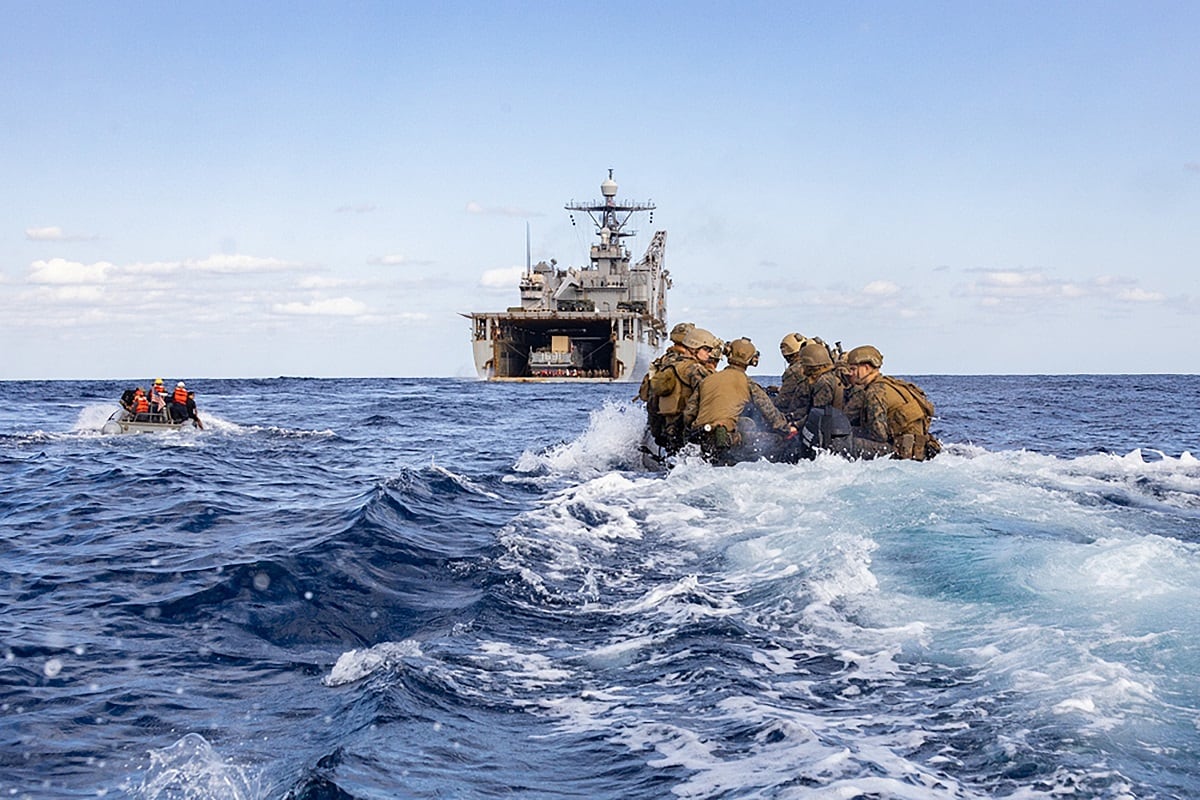
To make his vision a reality, Berger made cuts to beloved Marine weapons systems.
Within one year of announcing plan, titled Force Design 2030, the final Marine Corps tank battalion had closed shop, three infantry battalions were preparing to case colors and two of the Corps’ three law enforcement battalions had been deactivated.
“Over time, the scale and scope of the changes, which most of us believed would degrade the ability of the nation to respond to crisis, caused a desire to change the course,” said retired Marine Lt. Gen. Greg Newbold, who retired in 2002.
His last assignment was in the Pentagon as the director of operations for the Joint Chiefs of Staff.
The process
Extensive war gaming and analysis has shown the Corps is heading in the right direction, Marine Assistant Commandant Gen. Eric Smith said in February.
But even the top enlisted Marine admits war games are only theoretical until proven on battlefield.
War games are designed to expose flaws and come up with new ideas, Van Riper insists, not design the force.
While the Corps started to take permanent steps almost immediately after Force Design 2030 was announced, the Corps has focused on experimentation and proving the concept in the real world.
“I don’t think the Marine Corps will be terminating our design efforts anytime soon,” Dunne said.
Experimentation has showed signs of where the games got it wrong, Dunne said. For example, the Marine Corps cut too many law enforcement and engineer assets. He says he knows the Corps plans to restore those capabilities but did not give any details on when or how that would take place.
The Marine Corps has been tight-lipped and careful about rolling out details of its vision.
A “small group” designed the basis of Force Design 2030, Dunne said.
Since its nucleus was created, Marine Corps Combat Development has been in contact daily with fleet commanders, other Pentagon branches and combatant commanders, he said.
“A day doesn’t go by where we’re not having hard conversations,” Dunne said.
But hard conversations with stalwart Marines who have shaped the Corps seem to go in one ear and out the other, they say.
RELATED
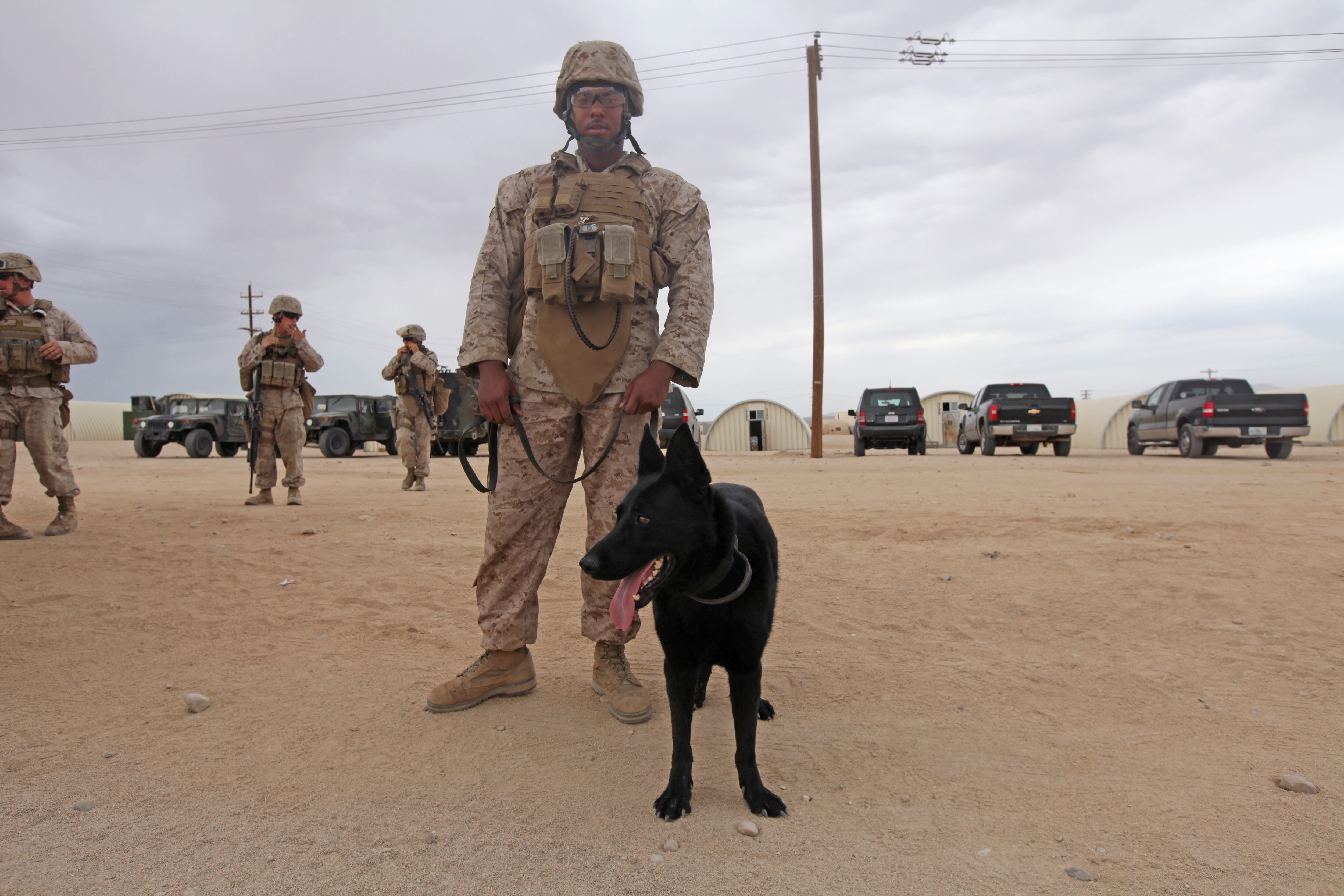
Newbold said, “it was apparent that course had been set and counsel was not needed or accepted.”
The commandant “listens politely, he does ask a few questions, he takes notes, but he’s inscrutable,” Van Riper said.
“We had our say … but the commandant is on the path that he is on,” said retired Lt. Gen. Brian Beaudreault, who served as the II Marine Expeditionary Force commander from 2019 until his 2021 retirement.
In an exclusive interview at the Pentagon on April 1, Sergeant Major of the Marine Corps Troy Black, who noted that he was in the Corps when many of these Marines themselves were changing the Corps, balked at the idea that the service isn’t moving in the right direction, also pointing to the fact that there is much classified information others don’t see.
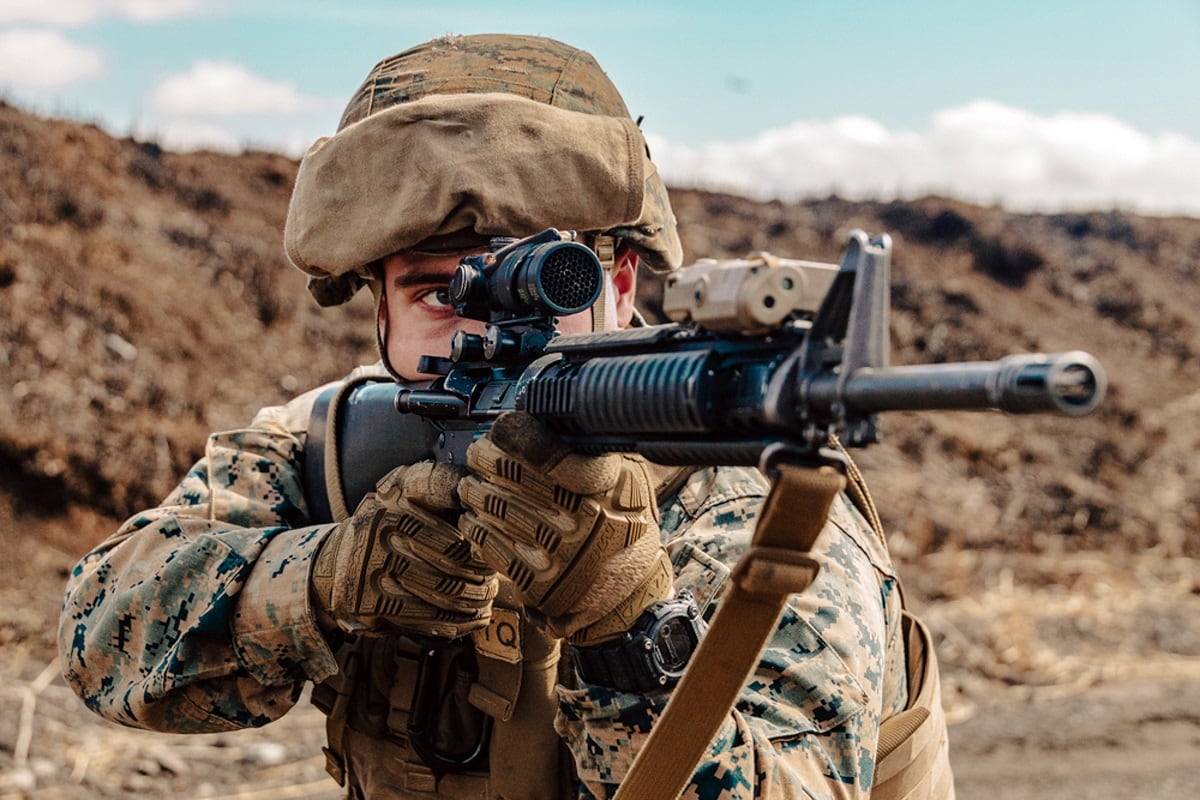
He says he entirely trusts leadership is “tasked and capable” of leading the force rightly.
From Van Riper’s point of view, combatant commanders may not ever have been consulted about the design change.
“What the National Security Council, what the combatant commanders, expect Marine Corps units to do in the future, they simply will be unable to do,” Van Riper said.
While Dunne did not know the details of the conversations Berger has had with generals in charge of combatant commands, he said the Marine Corps has a made an effort to explain how the new force design will make their job easier.
Money talks
The strongest Force Design 2030 proponents acknowledge cuts are difficult but necessary, given the political reality of a military that won’t see significant budget increases in the foreseeable future.
“We’re going to reshape ourselves for the future from within,” Berger had said in 2020.
But is reshaping without vehemently demanding more money the only option?
Beaudreault questioned whether the Corps has pushed Congress and the Biden administration enough.
“Are we making an assumption based on the Marine Corps top line, that we’re only going to have to be able to live within our top line?” the former II MEF commander asked.
Democrats with the majority in both houses of Congress long have talked about cutting defense spending or at least not raising it. But the tide may be changing.
RELATED

With Russia’s invasion of Ukraine in February, the Marine Corps may have an opportunity to raise its defense budget as the administration takes a harder look at a more aggressive Russia and China.
Biden is seeking a 4% increase in the 2023 defense budget in the wake of the Russian invasion.
But if the budget passes, the Corps still won’t be getting assets — like the light amphibious warship it insists is central to its fighting plan — as quickly as it has said is needed.
A gap in transformation is something Van Riper has been warning of: the vulnerable time between the Corps being a “powerful forcible-entry force” and the “specialized anti-ship force of the future.”
Where does that leave America?
Cutting tanks
A Marine Corps without tanks has been one of the most criticized parts of Berger’s plan.
The commandant repeatedly has said that if he had the money, he would have kept tanks — but given the direction of the Corps and financial realities, tanks had to be one of the first things to go.
Tanks have proven to be particularly penetrable on the modern battlefield.
“I would say, if you looked at Armenia and Azerbaijan, or Lebanon, or even right now in Ukraine, pretty clear that top-down sort of missile attacks on the top side of heavy armor, makes it pretty vulnerable,” Berger said in a Washington Post interview in March.
Russian military failure has more to do with issues within it than with tanks’ relevancy, Zinni said.
“You could draw the wrong conclusions from the (Russians) who attack with an armored formation at the wrong time of year and they can’t get off the roads they have no infantry or security for their routes.”
The problem with tanks, Marine reserve officer and military analyst B. A. Friedman argues, goes to logistic realities. In recent fights, the Corps has been given the space to build up and deliver its forces in relative peace. Logistics lines easily have been maintained, given the U.S.’s overwhelming advantages over enemies it faced.
“Russia put a force into combat that they could not logistically sustain, and now they’re paying for it in blood,” Friedman said. “That’s actually why Force Design 2030 is so important: because amphibious warships are vulnerable to anti-ship missiles, they can’t hang around close enough to shore long enough to get logistically-intense systems like the M1A1 and the M777 ashore and then sustain their fuel and ammunition requirements.”
The Marine Corps must plan for more than just one fight against one opponent, Van Riper insists, and the gutting of tank battalions weakens the firepower a Marine expeditionary unit carries.
RELATED
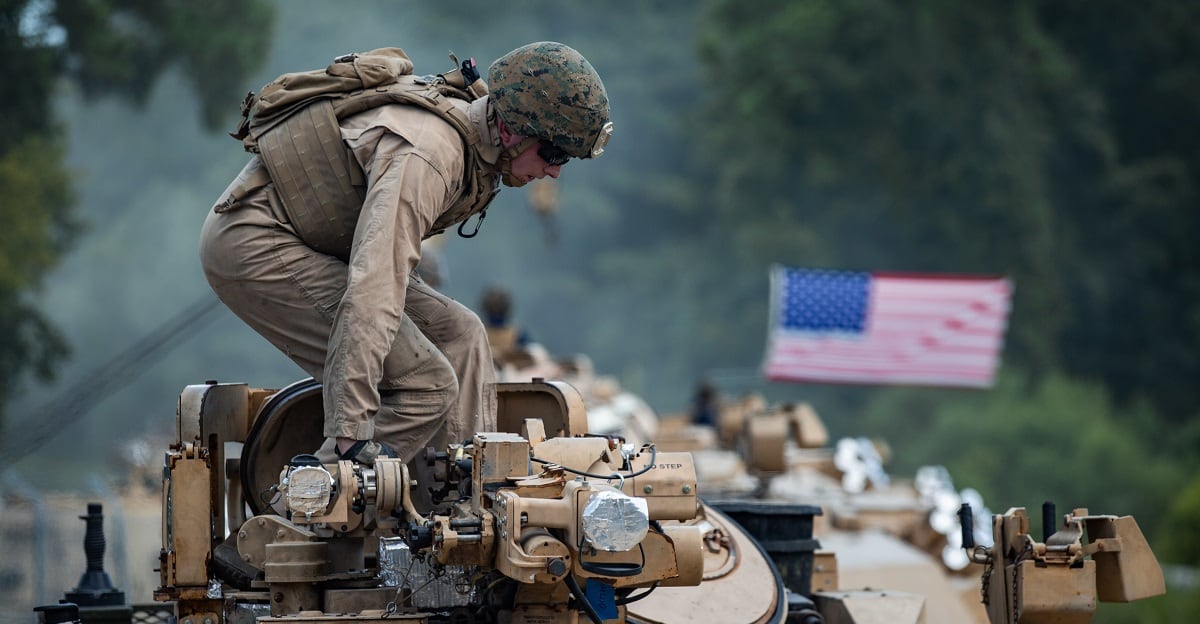
Think tank expert and retired Marine Col. Dakota Wood says that last point is irrelevant: the four tanks typically shipped on a MEU float were not enough to really change a battle’s outcome.
“What are you going to do with four tanks?” said Wood, a researcher with the conservative Heritage Foundation think tank. “It is nice to have in Somalia, but if you are going to Somalia, you can probably handle it with just about any American unit.”
Enough fire support
The Corps historically has had one cannon battery for every infantry battalion to ensure grunts had the fire support to fight.
Under force design, the Corps only will keep five traditional cannon batteries, with the bulk of artillery dedicated to missile units.
For Dunne the tradeoff is simple: If the goal is to deter a war with China, long-range missiles capable of sinking ships will go much further than more M777 batteries.
While missiles can outrange cannon fire and normally are more accurate and powerful, cannons still can provide quick sustained indirect fire support, at any time of the day, in any weather, better than any other system.
RELATED

The Marine Corps made an option to cut an asset it did not believe it could sustain in a war where the enemy can successfully attack supply lines.
“The M777 is not surviving long enough on the modern battlefield against a peer to shoot 300–400 rounds at a time,” Friedman said. “It’s simply not.
“So, you get artillery that is more survivable and sustainable, something around a 105 mm cannon that’s self-propelled, so you have that sustained rate of fire in an all-in-one system.”
Beaudreault wishes the Corps would consider diversifying cannons — bringing back the 120 mm mortar, a 105 mm howitzer and maybe even an 8-inch howitzer for particularly long-range capabilities.
The Naval strike missile is being looked to by the Corps for the China fight.
Vietnam infantry veteran retired Col. Bing West, the assistant secretary of defense for international security affairs under President Ronald Reagan, questions how effective it will be at deterring China from invading Taiwan.
Though Marines have experimented with shooting Naval strike missiles off of ships, the plan is to shoot them off land. The closest bit of land to the Taiwan Strait is the small island of Yonaguni, Japan, which would still leave Marines armed with the Naval strike missile out of range of any invading Chinese fleet.
The Marine Corps is testing the missile, but there is no indication it has settled on it. The Corps likely will acquire longer range missiles as the development of Force Design 2030 continues.
Van Riper said that even if the Marine Corps were to develop a missile with the appropriate range, shooting missiles is still better suited to the Army.
As of 2020 the Army had 363 High mobility artillery rocket systems, known as HIMARS. In the Pacific region alone, the Army has four HIMARS battalions, likely outnumbering the Marine Corps missile batteries in the region even after the Corps’ new investment.
Wood acknowledged that the Marine Corps will likely never have more long-range missiles than the other branches.
But the Marine Corps is better suited at slipping inside range of the enemy’s weapons systems, firing the missiles and getting away before the enemy has a chance to respond.
Less aircraft
The reduction in Marine aircraft may make slipping in and out of battle slightly harder.
Force Design 2030 will cut three Osprey squadrons and the CH-53 squadrons, while potentially providing more missions that require the transport aircraft.
“I thought the numbers were getting a little low,” Beaudreault said. “CH-53 squadrons, particularly in the Pacific for logistics, sustainability for expeditionary advanced bases, you’re going to need a bunch of those.”
Fewer planes will be an issue when it comes to close ground support.
Though the Corps is not cutting any fighter attack squadrons, it is reducing the size of squadrons. By 2030, the Marines will have 130 fewer F-35Bs.
In addition to the jet cuts, the Corps is cutting two light attack helicopter squadrons.
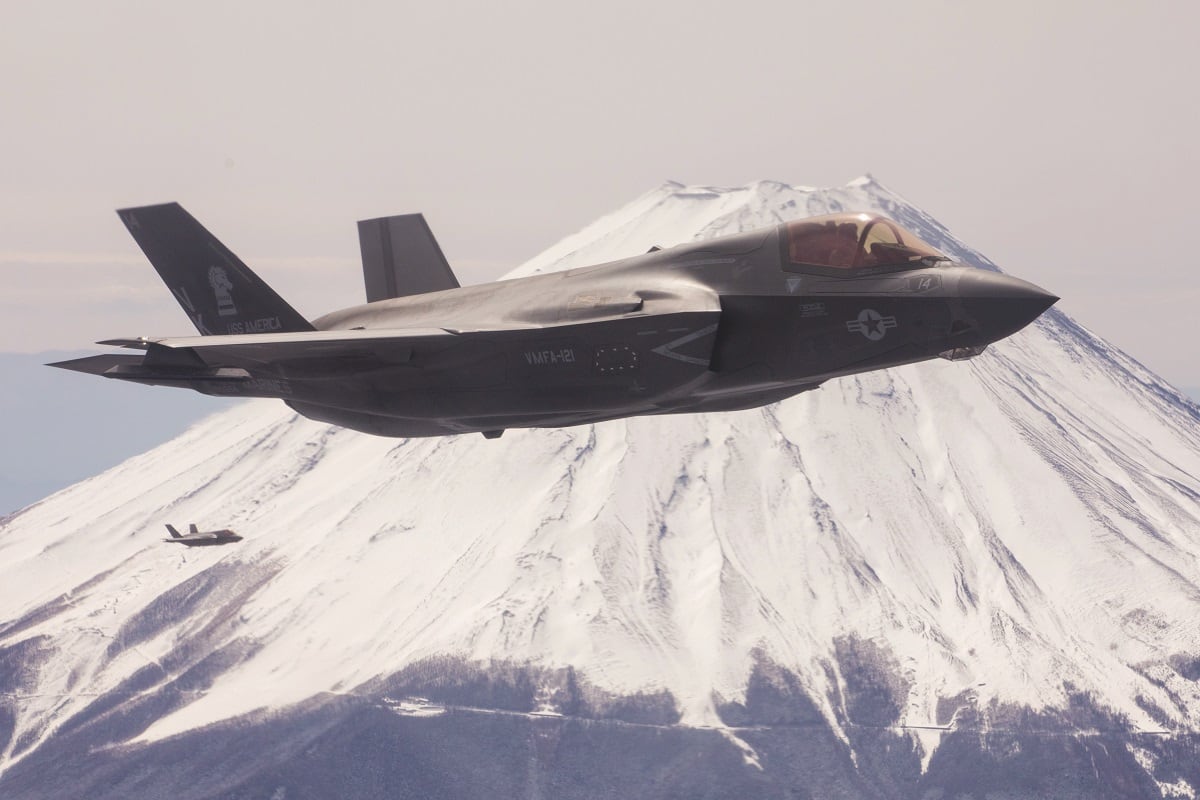
To make up for it, the Corps is investing in MQ-9 Reaper drones, in small drones that can be attached to infantry units and in loitering munitions.
While the force may have just enough aircraft to sufficiently support itself, when those units join the joint force for a larger fight non-Marine targets may become priorities, leaving Marine ground units without air support, Beaudreault said.
To make up for the loss of aircraft the Marine Corps plans to increase readiness.
“It looks like there is going to be fewer but there is going to be more up at all times,” Maj. Josh Benson, a spokesman for Marine Corps Combat Development Command, said in a phone interview.
There isn’t a guarantee increased readiness will happen, but more maintainers available for fewer aircraft leaves a good chance the Corps can near its goal, Dunne said.
The infantry
Though many retired Marines of stature have concerns about the entire plan, infantry may be at the top.
The original 2030 plan announced infantry battalions to shrink by about 200 Marines. Later developments called for battalions to ditch weapons companies, pushing more heavy weapons down to the platoons and companies and blurring the line between infantry roles.
Eventually there may be a single enlisted infantry military occupational specialty, doing away with specialization in the hopes of creating a more flexible force.
RELATED
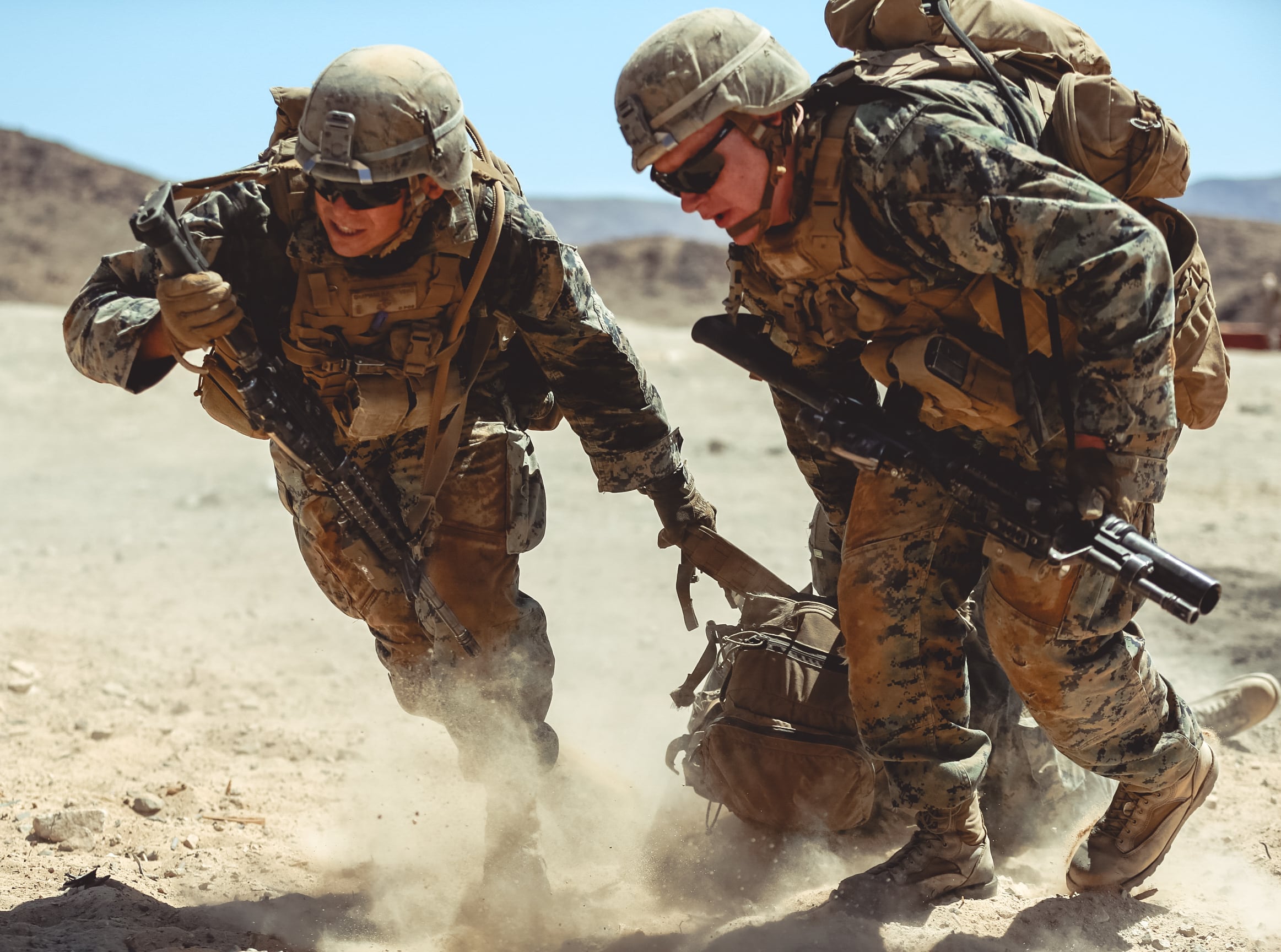
Beaudreault says specialization is important, particularly when it comes to complex systems like mortars.
“We know that 81 mm mortarman need constant training,” Beaudreault said, recalling incidents where untrained mortarmen have injured people when they did not fully understand system. “That’s where I think we were assuming risk inside the infantry that the commandant is comfortable with but I’m not.”
The Corps says one antidote is increasing the length of the school of infantry and teaching new skills. Increasing the maturity and age of the infantry by making staff sergeants squad leaders and gunnery sergeants platoon sergeants also is key.
Smith has said the exact size of the infantry is not yet set in stone.
“We are constantly adjusting the exact size of an infantry battalion, the exact number of missiles a unit needs to carry so that it matches our logistics capability, the exact signature that they will put out,” Smith said.
Van Riper said the Marine Corps has experimented with different infantry battalion sizes in the past but always returned to the pre-force design size of about 900 to 1,000 Marines.
But the role of infantry will change under Berger’s vision. Infantry will support artillery and the movement of U.S. ships.
In 2021 this strategy was put to the test with the 12th Marines taking a lead role in an exercise while using infantry as the supporting unit.
“It left a bad taste in my mouth initially,” Gunnery Sgt. Kyle Kimbriel, a platoon sergeant in 1st Battalion, 2nd Marines, II MEF’s experimental infantry battalion, said in February. “But now that I understand the bigger picture, I zoomed out of this thing, it makes complete and total sense.”
Whether the strategic goal is to take a city or free up a carrier strike group, a firefight is still a firefight — and the role of Marine infantry is still to close with and destroy the enemy, Kimbriel said.
Too niche
Another criticism of Berger’s plan is that it is too niche and focused on one type of fight with China.
If that fight does not happen, the Corps will be designed for the wrong war and could become obsolete as a force America depends on.
“I have no argument if Berger said we’re going to split a couple of units to do this sort of thing,” Zinni said. “But to convert the whole Marine Corps to one concept of employment that I think has marginal benefit” puts its future at risk.
A force focused on the most dangerous and advanced threat, in this case China, Wood says, easily will be able to adjust to fights and problems posed by lesser forces.
“If the Marine Corps can figure out a way to not only survive, but also be an actual effective fighting force in an inherently maritime environment, like that, facing China, that same sort of force structure … would be working in Ukraine … it would be working on the Arabian Peninsula,” Wood said.
Opening photo by Lance Cpl. Tommy Bellegarde/Marine Corps
Editor’s note: This story has been corrected to delete a reference to F-22s, as the Corps does not have F-22s.
